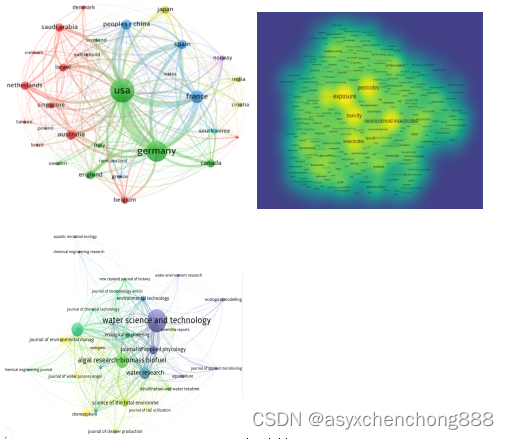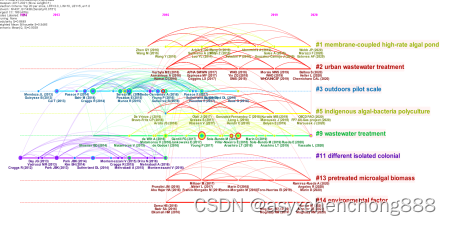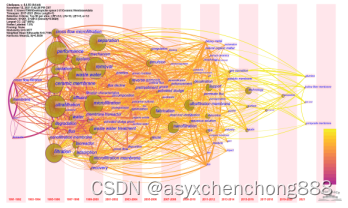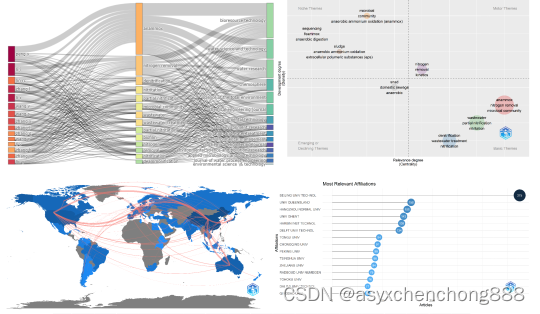Table of contents
Topic 1 Introduction to Bibliometric Methods and Applications
Special Topic 2 Topic Determination, Retrieval and Data Collection
Topic 3 VOSviewer Visual Drawing Intensive Lecture
Topic 4 Citespace Visual Drawing Intensive Lecture
Topic 5 R Language Bibliometrics Drawing Analysis
Bibliometrics refers to the interdisciplinary science that quantitatively analyzes all knowledge carriers by means of mathematics and statistics. It is a comprehensive knowledge system that integrates mathematics, statistics, and philology, and focuses on quantification. In particular, the application of information visualization technology means and methods can intuitively display the research development history, research status, research hotspots and development trend of the topic. Citespace and vosviewer are the most widely used literature information visualization software tools. They are widely used in science and engineering, economics and management, law, education, agriculture, literature and history, medicine, art and other disciplines, and the number of published papers has increased significantly year by year.
This course will combine theory with practice, through eight detailed explanations of bibliometrics explanation, efficient topic selection, database retrieval data download, software use, etc., so that students can systematically and comprehensively grasp the basic theory and knowledge of bibliometrics; Master Citespace, vosviewer and R language literature visualization analysis technology; finally realize the thinking logic and technical methods of a literature information visualization analysis report (thesis) from the topic determination, data analysis and drawing, article framework and writing, to the whole process. 
Topic 1 Introduction to bibliometric methods and applications
1. Basic introduction to bibliometric methods
2. Differences and connections with other review methods
3. Recent application trends in various disciplines
4. Comparison of advantages and disadvantages of mainstream analysis software
Topic 2 Topic determination, retrieval and data collection
1. Efficient selection method of hot topics
2. Feasibility prediction of target topics 3.
Construction of CNKI database search formula
4. CNKI data export method and precautions
5. WOS database search formula construction
6. WOS Data export and precautions
Topic 3 VOSviewer Visual Drawing Intensive Lecture
1. Vosviewer interface and main concepts introduction
2. WOS and CNKI data import
3. Co-citation network diagram drawing and interpretation key
4. Overlay network diagram drawing and interpretation key
5. Density map drawing and interpretation key
6. Keyword merging method and precautions
7. Coupling  display
display


Topic 4 Intensive Lectures on Citespace Visual Drawing
1. Introduction to CiteSpace layout and main concepts
2. WOS and CNKI data import and cleaning methods
3. Selection and interpretation of subject distribution map drawing parameters
4. Co-occurrence network map drawing parameter selection and interpretation
5. Clustering Parameter selection and interpretation of graph drawing
6. Selection and interpretation of emergent graph drawing parameters
7. Timeline graph drawing parameter selection and interpretation





Topic 5 R Language Bibliometrics Drawing Analysis
1. R package installation and calling, data loading and filtering
2. Publishing trend and citation analysis and interpretation
3. Document source analysis and interpretation
4. Cooperation network analysis and interpretation
5. Document analysis and interpretation
6. Keyword analysis and interpretation
7. Country Publication Density and Collaboration Analysis and Interpretation


Topic 6 Essay Writing
1. Analysis of typical structural patterns
2. Software collocation and combination skills
3. Diagram collocation strategy
4. Oriented literature reference routines
5. Modular writing ideas
1. Journal selection method
2. Preparation before submission
3. Matters needing attention in the submission process
4. Common review comments in bibliometrics
5. How to improve the hit rate after refusal to submit
recommend: